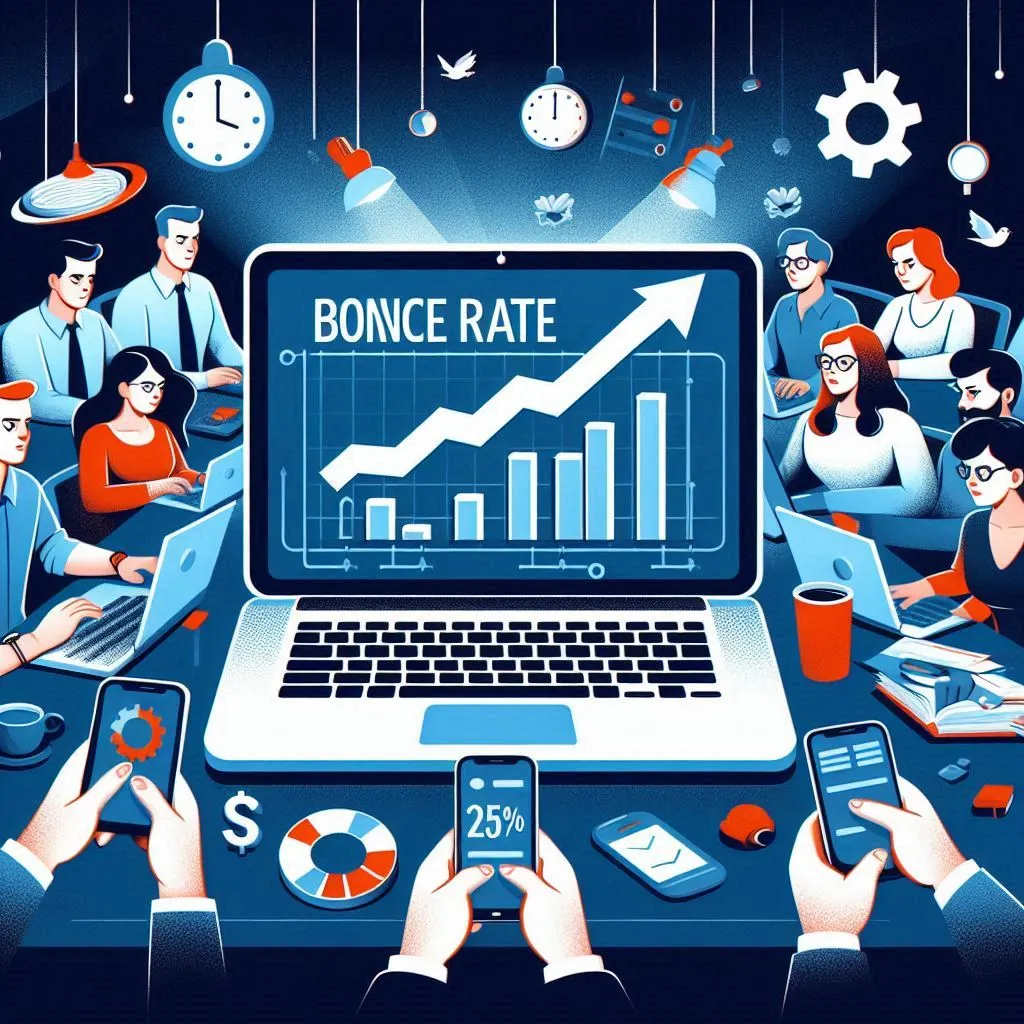Bounce Rate Demystified: How to Keep Visitors Engaged on Your Site
Bounce rate is a critical metric in web analytics, reflecting the percentage of visitors who navigate away from your site after viewing only one page. Understanding and optimizing bounce rates can significantly impact your site's performance, user engagement, and search engine rankings. In this blog post, we’ll explore what constitutes a normal bounce rate, the factors influencing it, and strategies to improve yours.

What is Bounce Rate?
Bounce rate is calculated as the percentage of single-page sessions on your site. A "bounce" occurs when a user lands on a page and leaves without taking any further action, such as clicking on a link, filling out a form, or navigating to another page.
What’s a Normal Bounce Rate?
Bounce rates can vary widely depending on the type of website and industry. Here’s a general breakdown of average bounce rates by website type:
- Content Websites: 40-60%
- Lead Generation Sites: 30-50%
- Blogs: 70-90%
- Retail Sites: 20-40%
- Service Sites: 10-30%
- Landing Pages: 70-90%
Source: RocketFuel
While these averages provide a general benchmark, it’s essential to consider your site’s specific context and goals when evaluating your bounce rate.
Factors Influencing Bounce Rate
Several factors can influence your bounce rate, both positively and negatively:
1.Page Load Time: Slow-loading pages can frustrate users, causing them to leave before engaging with your content. Aim for a page load time of under three seconds.
2.Mobile Optimization: With the increasing use of mobile devices, ensuring your site is mobile-friendly is crucial. A poor mobile experience can lead to higher bounce rates.
3.Content Relevance: If visitors don’t find the information they’re looking for, they’re likely to leave. Ensure your content matches user intent and provides value.
4.User Experience (UX): A confusing or cluttered design can drive users away. Simplify navigation, use clear calls-to-action (CTAs), and maintain a clean layout.
5.External Links: Linking to external sites can sometimes lead to higher bounce rates. Ensure that links open in a new tab to keep users on your site longer.
How to Improve Your Bounce Rate
Improving your bounce rate involves enhancing various aspects of your site to create a more engaging and user-friendly experience. Here are some effective strategies:
1.Improve Page Load Speed
- Compress Images: Use tools like TinyPNG or JPEGmini to reduce image sizes without compromising quality.
- Minimize HTTP Requests: Reduce the number of elements on your page (scripts, images, CSS) to decrease load times.
- Use a Content Delivery Network (CDN): Distribute your content across multiple servers to ensure faster delivery to users based on their geographic location.
2.Enhance Mobile Experience
- Responsive Design: Ensure your site adapts seamlessly to different screen sizes and devices.
- Mobile-Friendly Navigation: Simplify menus and navigation elements for easy mobile use.
- Test on Multiple Devices: Regularly test your site on various mobile devices to identify and fix usability issues.
3.Optimize Content for User Intent
- Targeted Keywords: Use keywords that match the search intent of your target audience.
- Engaging Formats: Incorporate multimedia elements like videos, infographics, and interactive content to make your pages more engaging.
- Clear and Concise Writing: Write clearly and concisely, providing the information users need without unnecessary fluff.
4.Improve User Experience (UX)
- Simple Navigation: Make it easy for users to find what they’re looking for with a clear and intuitive navigation menu.
- Effective CTAs: Use clear and compelling calls-to-action to guide users towards taking the next step.
- Readable Layout: Use a clean design with ample white space, legible fonts, and a logical flow of information.
5.Utilize Internal Linking
- Related Content: Link to related articles or pages within your site to keep users engaged and encourage further exploration.
- Contextual Links: Use internal links within the content to provide additional value and context to users.
Conclusion
Bounce rate is a valuable indicator of how well your site is engaging visitors. By understanding the factors that influence bounce rates and implementing strategies to improve them, you can enhance user experience, increase engagement, and boost your site's overall performance. Regularly monitor your bounce rate and make data-driven adjustments to ensure continuous improvement.
For more insights and tips on web analytics and SEO, visit the HypeStat Blog.
References
1. RocketFuel
2. Google PageSpeed Insights
3. Moz Blog
4. TinyPNG
5. JPEGmini
6. Google Mobile-Friendly Test
7. Neil Patel
8. HubSpot
9. Ahrefs